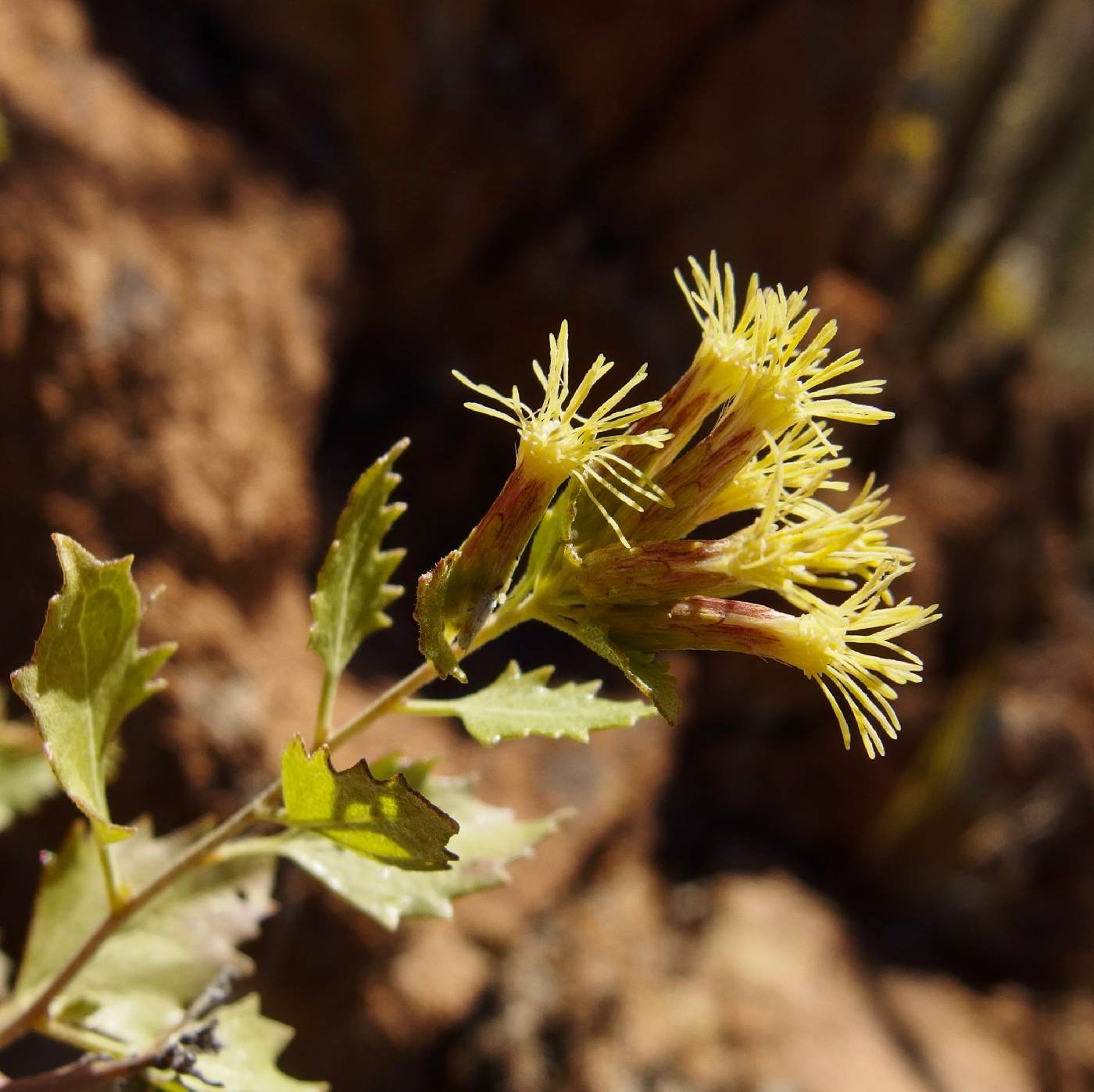
|
Family: Asteraceae |
Annuals, perennials, subshrubs, or shrubs, (12-)30-120(-200) cm. Stems mostly erect, often much branched (sometimes virgate, often striate). Leaves cauline; opposite or alternate; petiolate or sessile; blades usually 3-nerved from bases, deltate, lance-elliptic, lance-linear, lanceolate, lance-ovate, lance-rhombic, linear, oblong, obovate, ovate, rhombic-ovate, spatulate, or suborbiculate, margins mostly crenate, dentate, entire, laciniate-dentate, lobed, serrate, or toothed, faces glabrous (sometimes shiny) or glandular-puberulent, strigose, or tomentose, sometimes gland-dotted. Heads usually in corymbiform, sometimes cymiform, paniculiform, or racemiform, arrays, rarely borne singly. Involucres cylindric to obconic or campanulate, 5-12 mm diam. Phyllaries persistent, (10-)14-45(-60) in 3-7(-9) series, usually (4-)5-6(-16)-striate or -nerved, linear or lanceolate to oblanceolate or oblong, usually unequal (usually chartaceous, sometimes herbaceous). Receptacles flat to convex, epaleate. Florets (3-)8-45(-90); corollas usually white or whitish to cream, sometimes greenish, purplish or yellowish, throats mostly cylindric to narrowly funnelform (lengths 3-5 times diams.); styles: bases enlarged, hairy, branches narrowly clavate (± dilated distally). Cypselae narrowly prismatic, 10-ribbed, glabrous or hairy to glabrate, often gland-dotted; pappi persistent, of 10-80 usually smooth or barbellulate to barbellate, sometimes plumose or subplumose bristles in 1 series. x = 9. |
This project was made possible in part by the Institute of Museum and Library Services [MG-70-19-0057-19].
Powered by Symbiota



